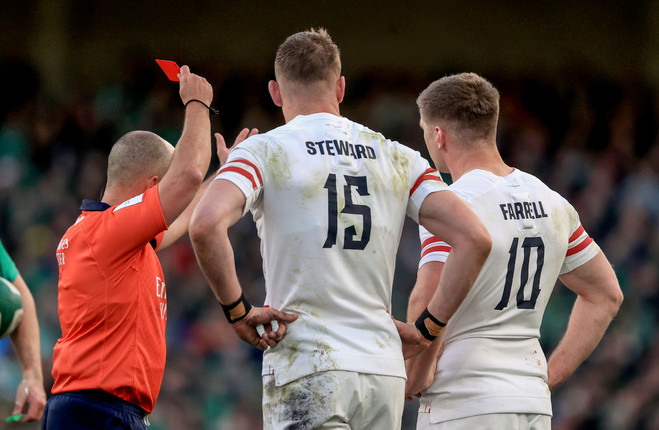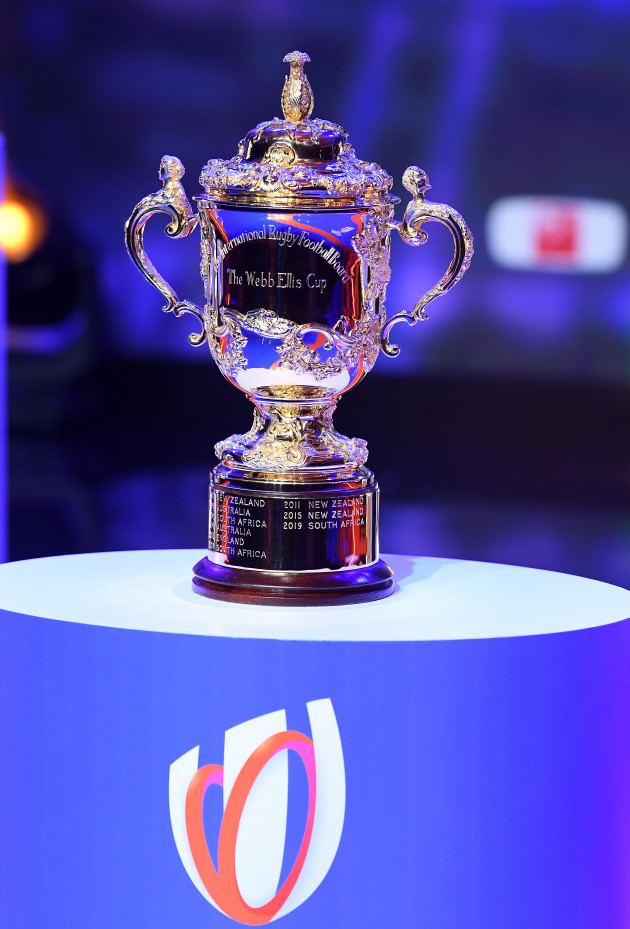THE ANNOUNCEMENT ON Monday attracted little fanfare, which is often the case with matters relating to rugby’s laws. Match officials’ decisions often end up being the biggest talking points, but press releases about rules, referees, and TMOs aren’t that sexy.
So just in case you missed it, World Rugby has confirmed that a new ‘Television Match Offical [TMO] Bunker’ system will be trialled at the U20 World Championship in South Africa in June.
If this goes well, the concept is set to be trialled in the Rugby Championship in July and if that’s all good, it will roll on into the warm-up games before the World Cup, and if that works out, it will be in play for the World Cup itself kicking off in September.
So what is the TMO Bunker?
Essentially, the idea is to allow difficult yellow/red card decisions around foul play involving head contact to be made off the pitch, ensuring more time to reach that decision and also speeding up the restart of the game on the pitch.
Under the TMO Bunker concept, World Rugby is still asking referees to show a red card to any player who is guilty of a “clear and obvious” act of foul play involving contact with the head that warrants a red.
But for incidents where the referee has seen a couple of replays and the decision is not obvious, the referees can show yellow and from there, the “dedicated foul play reviewers in a central bunker” will review the incident using all available footage.
Those reviewers will have the 10-minute sin-bin window to decide whether the yellow card was sufficient or whether it needs to be upgraded to a red card.
If it is upgraded to a red card, the player is permanently sent off and unable to be replaced.
While this is all very similar to the Yellow Card Review system currently in use in Super Rugby, which we have broken down here, the TMO Bunker system does not involve any 20-minute red cards.
World Rugby has also clarified that there won’t be any orange cards shown by referees, just the usual yellows and reds.
When considering how the TMO Bunker could affect games, just think of recent examples like Freddie Steward’s red card against Ireland or Zach Mercer’s red for a high tackle when Montpellier played Exeter. They were tough calls in the heat of the game, and both of those reds were later rescinded. It’s easy to imagine them going to the Bunker for closer review. And it’s obviously easy to imagine Uini Atonio’s yellow card against Ireland in the Six Nations being upgraded to red under the new system.
One aspect that World Rugby will hope to see transferring from Super Rugby is how quickly referees are dealing with these incidents. Data from the early rounds of the competition tells us that the game has been sped up thanks to a reduction in stoppages.
Referees are watching just two or three replays before concluding that a player’s foul play meets the ‘yellow card threshold’ and sending them to the sin bin, allowing the TMO to decide whether it needs to be upgraded to red.
Therein lies one challenge for the TMO Bunker system. World Rugby has stressed that red card actions should still result in an on-pitch red card, but how many referees are really going to show red? Why wouldn’t they just have a quick look, flash yellow, and let someone else with more time to decide whether it’s actually red?
Who will the ‘foul play reviewers’ be? Well, the simple answer is TMOs.
In Super Rugby right now, there is a TMO assistant in the same room as the main TMO. When the referee calls for a yellow card to be reviewed, the main TMO does that job while the assistant TMO tracks the live action to make sure nothing else is missed.
At the World Rugby U20 Championships, it’s expected that a ‘TMO 2′ will be in a separate room from the main TMO. This new ‘TMO 2′ is now expected to review these instances of foul play.
But World Rugby is planning to step all of this up if the TMO Bunker features at the World Cup. It’s understood that the idea being discussed at the moment is for an actual off-site ‘bunker’ to be set up at the International Broadcast Centre in Paris, where two TMOs will work together to review the incidents and reach a decision.
There’s growing support for this move within rugby. The idea stems from a ‘Shape of the Game’ conference held by World Rugby earlier this year, with some leading coaches, administrators, match officials, and player representatives coming together. It sounds like everyone agreed that TMO reviews take too long and are still getting things wrong.
There was, once again, disagreement around the 20-minute red card that is favoured in the Southern Hemisphere, so that is not part of the plans with the TMO Bunker.
Nonetheless, it’s a notable change. World Rugby’s own law book tells us that “the referee is the sole judge of fact and of law during a match” but this process means they aren’t anymore. Who cares, we hear some of you ask, and it may well be the case that some parts of the law book are just outdated.
Indeed, it sounds like some referees are in favour of the TMO Bunker after initially humming and hawing. Only those referees know the pressure of trying to make the right decision when under pressure from 60,000 fans in the stadium and under pressure to make the decision quickly. You can understand if they’re happy not to make that call when it’s not immediately clear and obvious.
Is it too soon before the World Cup to bring this in at the highest level? Perhaps, but it’s not as if it’s a completely complicated process. It’s easy to understand and there haven’t been any obvious teething problems in Super Rugby’s version so far.
As we’ve pointed out before, it is crucial that fans both in the stadium and watching on TV are fully informed of what’s happening with the review of the yellow cards and why a decision is made. If it’s being upgraded to red, everyone needs to know exactly why.
It sounds like that’s being considered in the plans too, although it will be tricky at the U20 World Championship which will obviously take place in smaller stadiums than would be the case at the World Cup, where referees would be expected to physically show a red card to the player in the sin bin if it’s being upgraded, while the in-stadium big screens should also be able to relay the information.
Who knows, there may be unintended consequences with the new system but if it means getting more decisions correct and taking less time, it’s worth a spin.



